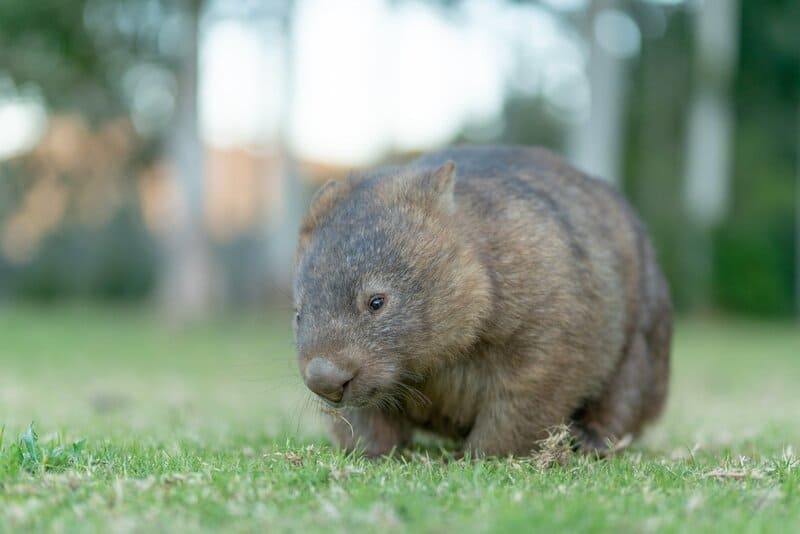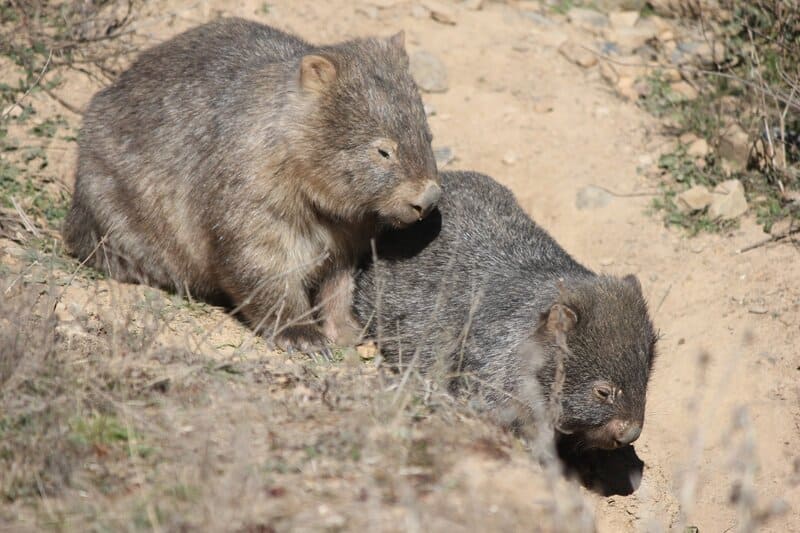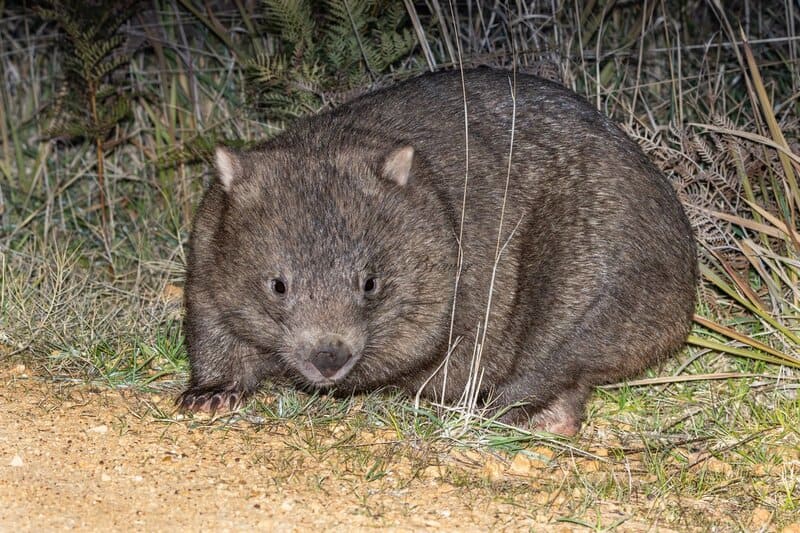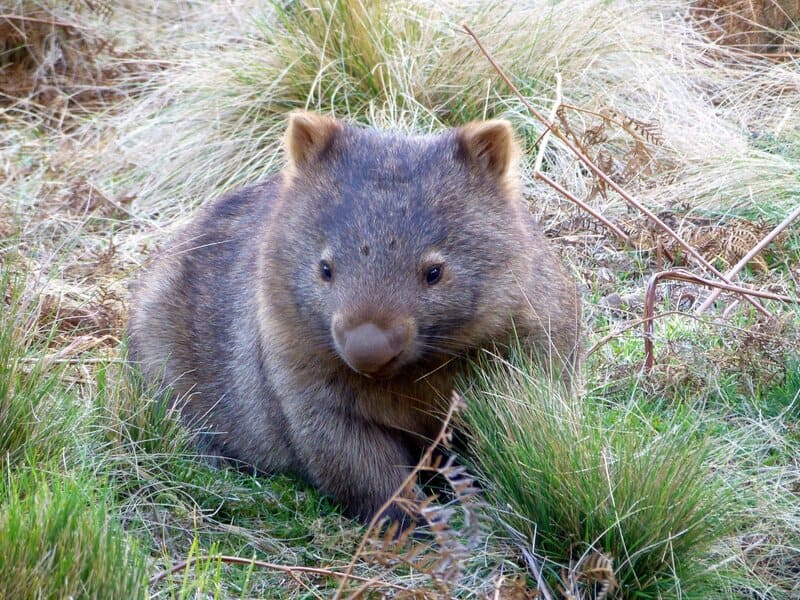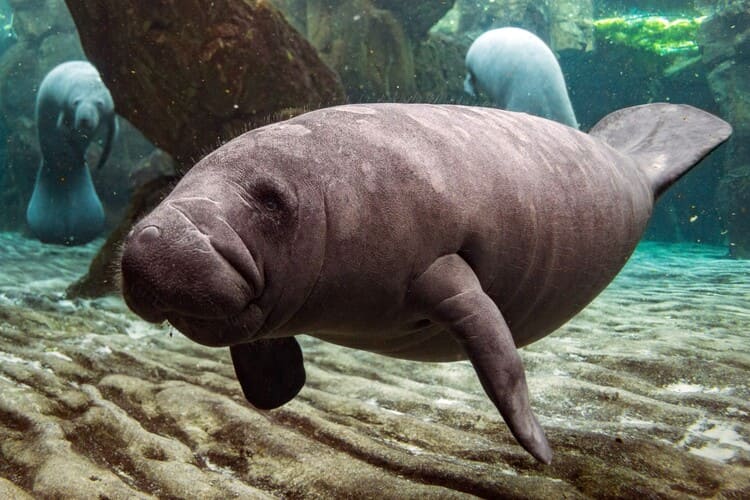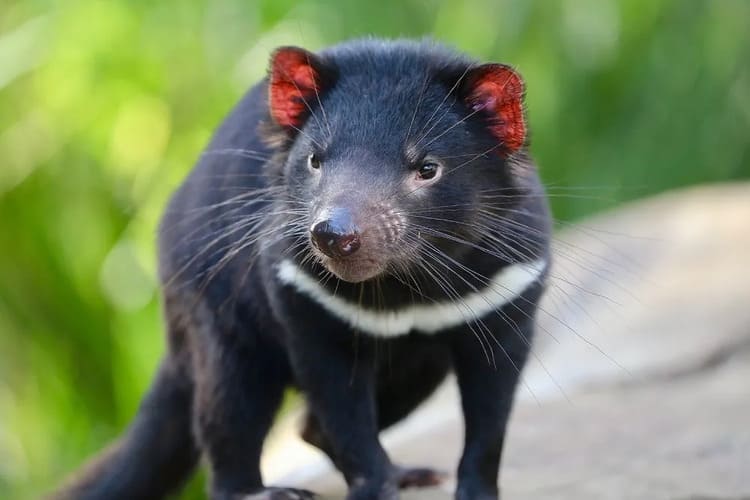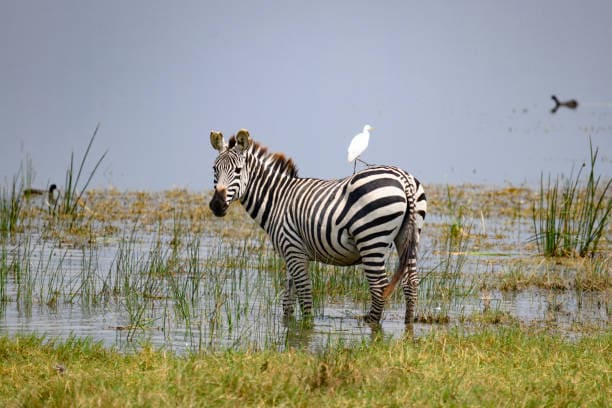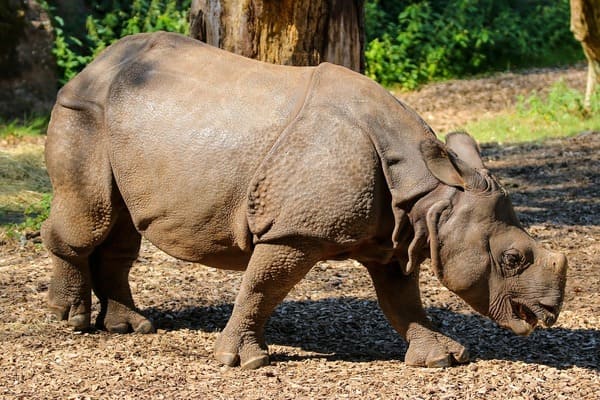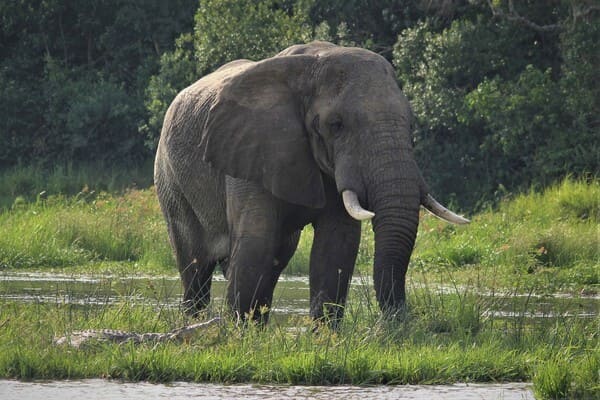Common Wombat
IUCN
LCBasic Information
Scientific classification
- name:Common Wombat
- Scientific Name:Vombatus ursinus
- Outline:Mammal
- Family:Vombatidae Vombatus
Vital signs
- length:90–115 cm; shoulder height ~35 cm
- Weight:20–35 kg (regional variation)
- lifetime:Wild ~5–15 years; 20+ years in care
Feature
Powerful burrower; rear‑opening pouch; efficient herbivore; cube‑shaped faeces; mostly nocturnal and solitary.
Distribution and Habitat
Temperate forests/shrublands/grasslands of SE Australia and Tasmania; well‑drained soils.
Appearance
Stout build; shovel‑like claws; pelage sand‑brown to dark grey; broad muzzle; short rounded ears.
Details
The common wombat (Vombatus ursinus) is a burrowing marsupial of Vombatidae from south‑eastern Australia and Tasmania, famous for powerful digging and cube‑shaped faeces used in scent‑marking.
Ecology & Biology
Activity: mainly crepuscular/nocturnal; daytime refuge in burrows.
Diet: herbivore—grasses, sedges, roots and bark; efficient hindgut fermentation.
Reproduction: female has a rear‑opening pouch; joey remains in pouch for ~5–6 months.
Sociality: mostly solitary; burrow systems reused by multiple individuals.
Identification
Stout, short‑legged; strong shoulders; large shovel‑like claws.
Pelage sand‑brown to dark grey/blackish; broad muzzle; short rounded ears.
Ever‑growing incisors adapted to abrasive forage.
Size & Longevity
Length: 90–115 cm; shoulder height ~35 cm.
Weight: 20–35 kg (regional variation).
Life: wild ~5–15 years; in care 20+ years.
Range & Habitat
South‑eastern mainland Australia and Tasmania; prefers temperate forest, shrubland and grassland on well‑drained soils, including rural edges.
Conservation & People
IUCN: Least Concern (LC); local pressures include roads, mange, fragmentation and farm conflict.
Ecosystem role: an ecosystem engineer whose burrows aerate soil and shelter other fauna.
FAQ
Q1. Why cube‑shaped droppings? High water re‑absorption and anisotropic intestinal elasticity plus final compaction create cube‑like pellets that resist rolling.
Q2. Do they live in groups? Mostly solitary; burrow networks may be reused by multiple individuals.
Q3. Dangerous to people? Shy but can charge if cornered; never block burrows.
Q4. Difference from hairy‑nosed wombats? Vombatus: less hairy muzzle, variable pelage; Lasiorhinus: hairier snout, different range/traits.

